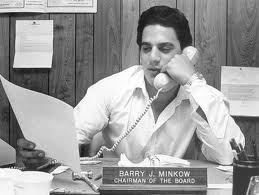 Analyst recommendations: –
Analyst recommendations: –
Strong Buy – Buy
Buy – Hold
Hold – Sell
Sell – It’s too late.
Back–testing: – the art of adjusting trading system parameters so as to ensure maximum profit in the past and zero profit in the future.
Charting: – “join-the-dots” for adults.
Computerized system testing: – torturing the data until it confesses. See: back-testing
Cycle analysis: – a method of analysis that allows losing trades to be organised into regular patterns.
Derivatives: – securities that are identified by acronyms – CHIPS, COBRAS, LEAPS, PERQS, STEERS, TRIPS, ZEPOS – all of these things are derivatives. Unfortunately, little else is known about them.
Daytrading: – an activity that takes place in between meaningful periods of employment.
Eurodollars: – U.S. Dollars, of course.
False Break: – an actual break of a trendline that triggers a losing trade. False breaks confirm the usefulness of trendline analysis. Only those breaks that are false cause problems, and those breaks don’t count, because they are false.
Float (initial public offering): – stock that is offered to you because other people have turned it down. The guiding principle in relation to floats is as follows: “never participate in a float that you are able to participate in.”
Fundamental analysis: – a method of analysis that provides compelling reasons for why a stock shouldn’t fall in price when it does.
“Fundamentally sound”: – the condition in which an economy finds itself immediately after a stock market collapse.
In-house analyst: – an employee of a broking house who dresses mutton up as lamb and advertises it on special.
Institutional investor: – someone who dumps a stock big-time, a day or two after you’ve bought it, for no apparent reason.
Live feed: – a technology that enables the instant incorporation of bad ticks into a charting program.
Market report: – a concise explanation of why a market traded up or down. 99% of market reports are drawn from other market reports. The remainder are whimsical.
Money-management: – the art of hiding trading losses from a spouse.
Over-bought: – a market is considered to be in an over-bought condition when everyone else appears to have bought it, but you haven’t.
Position trade: – a short-term trade that is in deficit, and will be closed out as soon as it breaks even, however long that takes.
Price/Earnings Ratio: – a ratio that indicates whether the price of a stock is attractive in relation to last year’s earnings. A low number indicates a bargain. However a low number can also indicate a lemon. If a company starts going down the tube, its stock price will appear very attractive in relation to last year’s earnings. The P/E Ratio is a versatile indicator.
Seasonal analysis: – the assumption that other people who trade Heating Oil Futures know nothing about winter.
Stochastics: – a technical indicator so-named because the name sounds technical.
Stop-loss: – the trader’s equivalent of a condom. It’s something you know you should have used after it’s too late.
Support: – a line drawn on a chart, the breaking of which is deemed extremely significant, even if the only people trading the stock at the time are two of three ladies at the tennis club.
Support/Resistance: – supposed allies that flee at the first sign of trouble.
Tankan Index: – a closely watched figure, that measures the extent to which the Japanese economy is tanking.
Technical analysis: – subjective analysis of the markets dressed up in a lab coat.
Technical indicator: – a transformation of a price series that contains less information than the series itself. Different technical indicators throw away information in different ways.
They: – the members of a powerful international conspiracy who target small, private traders in order to make their lives miserable. For instance, “they ran the market to my stop and then turned it around.”
Trading floor: – the traditional venue for the negotiation of securities, now made redundant by screen trading. Trading floors that remain open serve a valuable purpose as colorful backdrops to market reports on television.
Trading genius: – a reckless spirit in a bull market.
Trendline analysis: – a form of analysis that works best on a computer screen, where lines can be erased and re-drawn without trace.
Zero-sum game: – a game in which the players slug it out and the broker wins.


 Analyst recommendations: –
Analyst recommendations: –